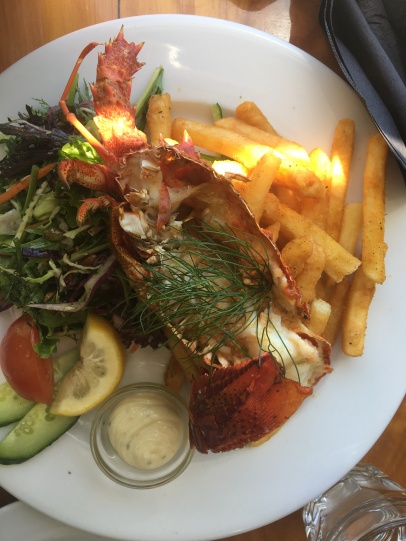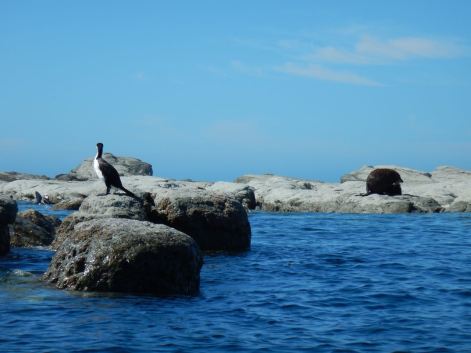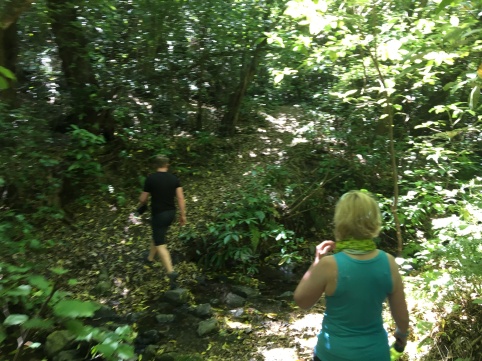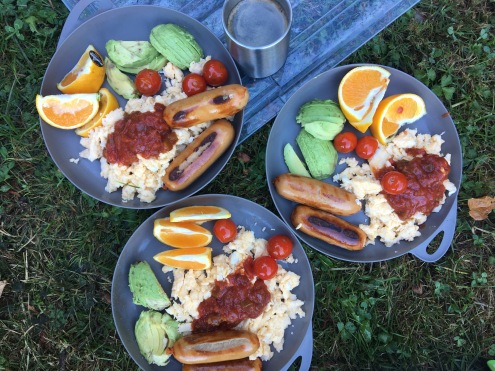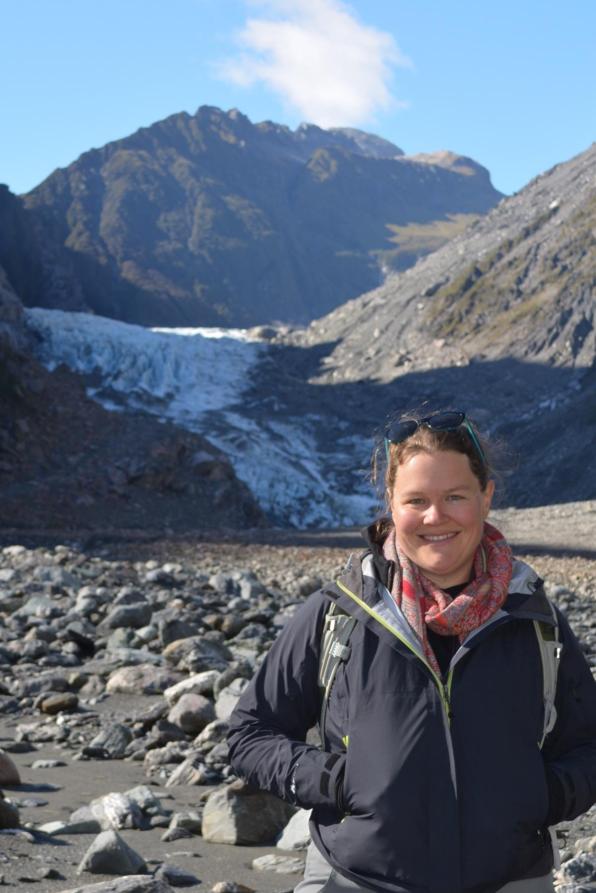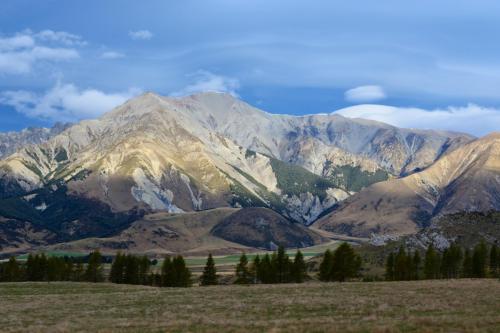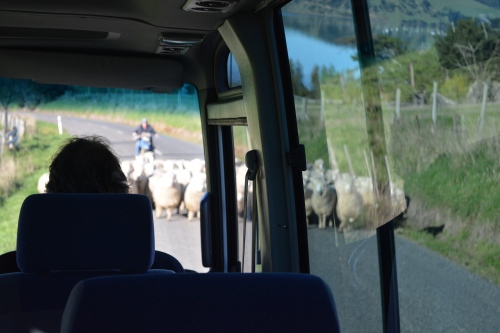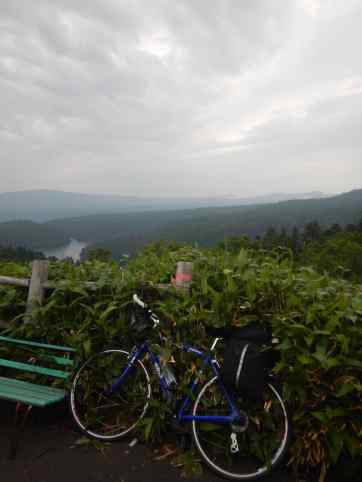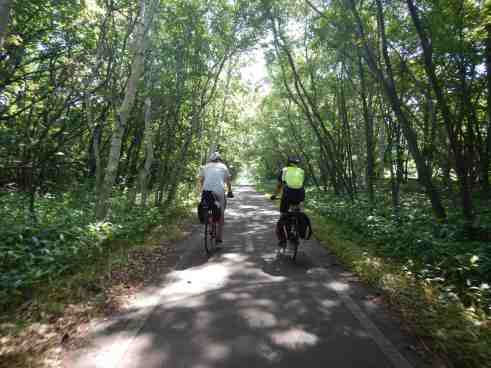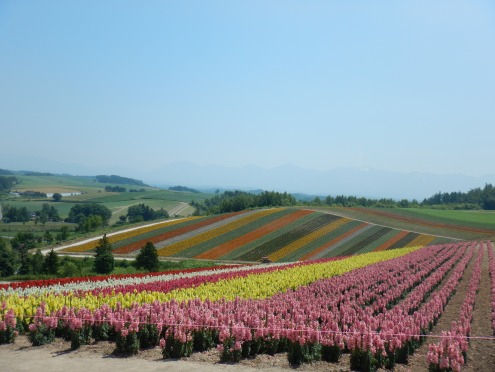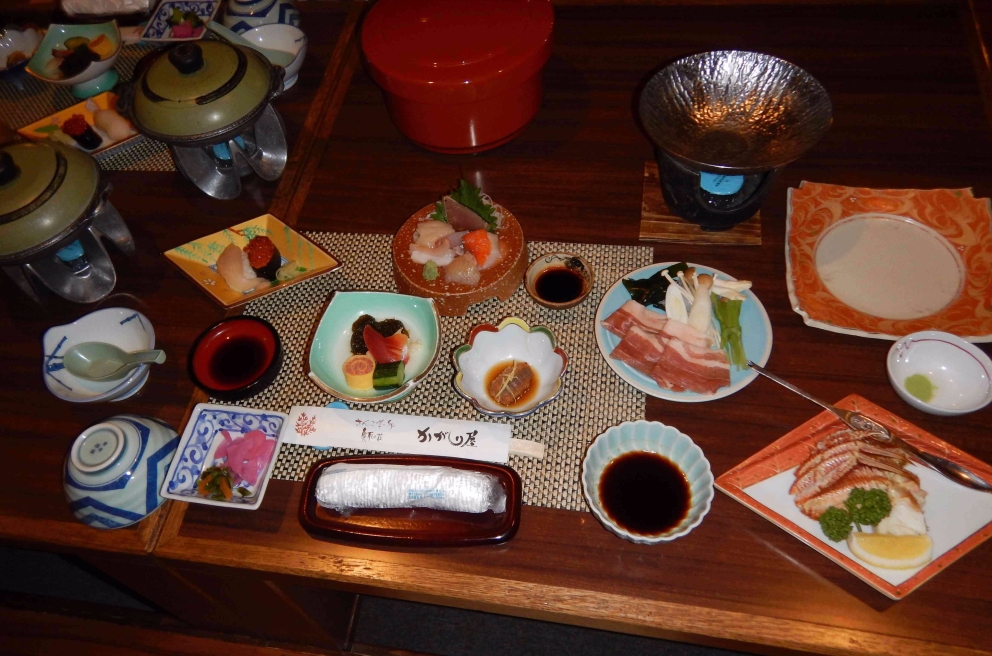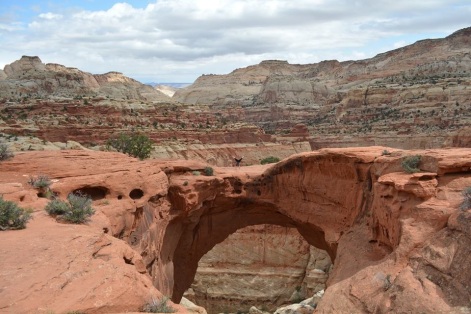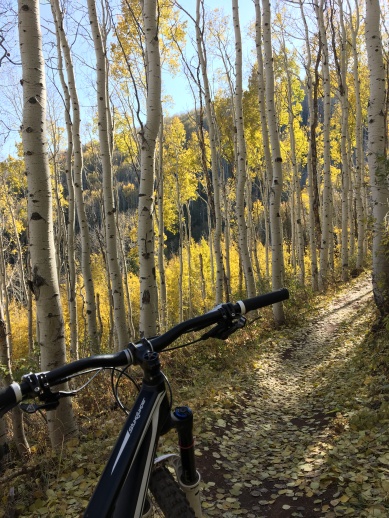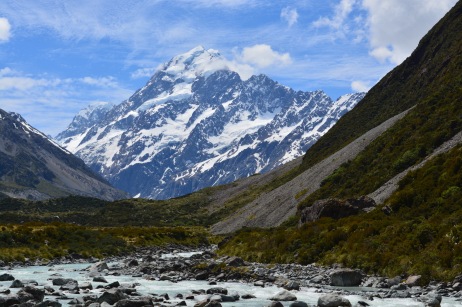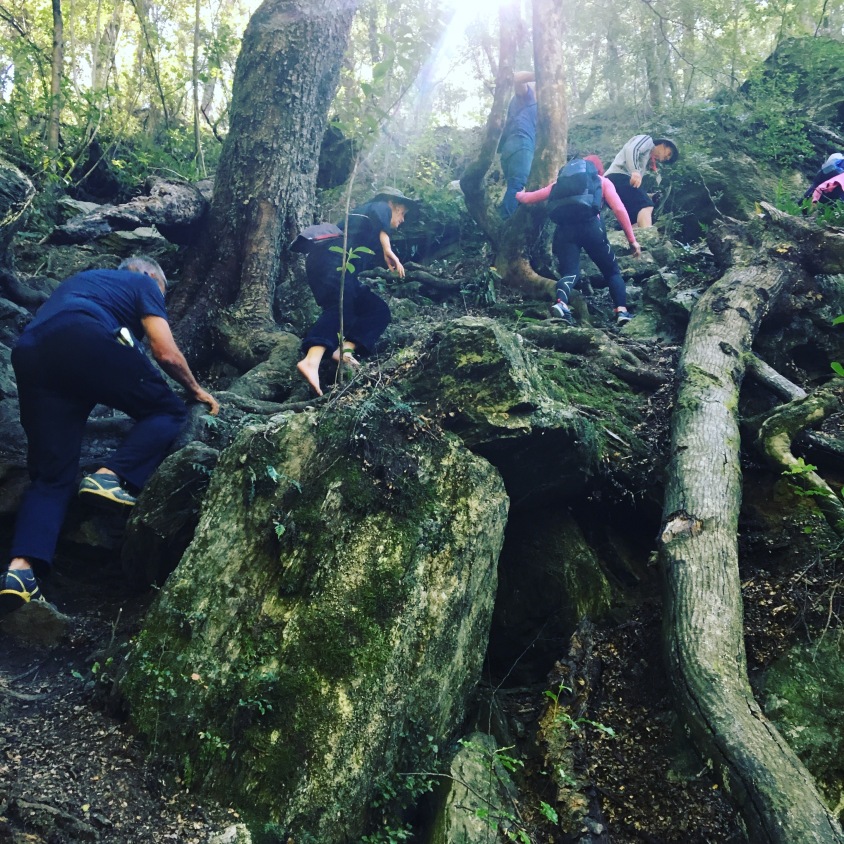Yesterday, with my bike and a friend, I took a peddle down the Little River Rail Trail, starting in Motukarara and going just over 22km to Little River where we stopped for lunch before peddling back. Little River is a typical stop on the route from Christchurch to Akaroa, and there are a couple of small stores (including one with a co-op where I bought some local lemons and hazelnuts) and a bustling café and gallery. My lunch at the café including a side of Quinoa, which left me reminiscing about a month of my residency training spent in Peru where I worked to improve my medical Spanish.
During residency training there are a number of required rotations. Family Medicine Residents must have adequate experience in hospital medicine, obstetrics, pediatrics, and a host of other fields of medicine (and of course adequate out-patient Family Medicine practice). There is, however, elective time given to pursue non-required interests. Doing a Medical Spanish elective gave me the opportunity to brush up on my Spanish and, as I chose to pursue this training abroad, fed my wanderlust.
My Spanish education started in 7th grade. I wasn’t very good. In fact, despite taking 2 years of Spanish before going to High School I placed into Spanish 1 as a freshman in High School. I trudged on through 4 years of Spanish, and as a freshman in college placed into something equivalent to Spanish 3. Languages really aren’t my forte!
Being a part of the horse world, I had quite a few opportunities to practice my Spanish, as many immigrants from Central and South America work in the horse industry. In college I also did an elective on “The Culture and Ecology of the Yucatan Peninsula” where we spent three weeks on the Yucatan Peninsula in Mexico and also took a spring break trip to Spain. My Spanish certainly wasn’t stellar, but it was good enough to get around and get me home when I inevitably became lost (I could do a whole series on being lost in foreign countries). I also spent a couple of weeks in Ecuador before starting residency.
It should surprise no one that Spanish is a useful language for doctors in the United States. In Utah 13.7% of residents were Hispanic as of 2016 , and that number is increasing. While most speak English, many don’t, so it was easy to make a case to my residency program to take some elective time to brush up on my Spanish and spend some time dedicated to learning Medical Spanish (something I had never specifically studied before).
There are lots of programs that offer Medical Spanish training. I looked into going to Columbia (a country I have wanted to visit for many years), as well as returning to Ecuador (a country I fell in love with during my earlier travels), but after spending some time looking at airfare and various Language Schools I settled on a program in Cusco Peru. The price was right, the flight from Salt Lake wasn’t too atrocious (though not short by any means) and Cusco looked to be a beautiful city with easy access to amazing places such as Machu Pichu.
In January 2016 I packed up my bags and headed to Cusco. Just before 5am on a Saturday I arrived in Cusco, was picked up by taxi, and dropped off with my host family. “Mi Madre Cuzqueña” (My Cuscanian Mother) met me outside, insisted I have a cup on Mate de Coca (Coca Leaf Tea), a rest, and then at 9am we would drive out to “El Valle Sangrado”- the Sacred Valley to site see. I couldn’t believe my good luck to explore the local sites my first day in Peru.
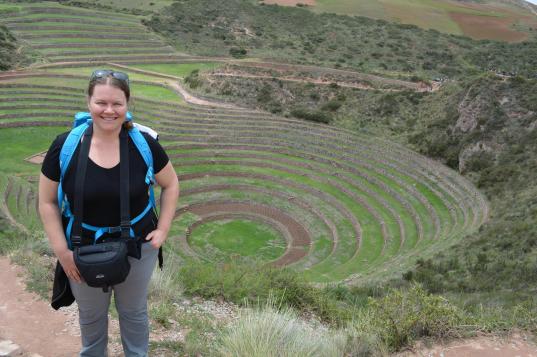
5 hours after stepping off the plain in Cusco I was in the Sacred Valley (El Valle Sangrado), at amazing sites like this. Moray is believed to be an Incan agricultural research center, studying the microclimates of terraces
My time in Peru was amazing. The school experience was good, and the teachers were excellent. In addition to group classes (there were only 2 of us in my class the first week, and 4 the second), there were various experiences through the school such as dancing classes, cooking classes, and walking tours. As part of my medical Spanish training I worked one-on-one with one of the teachers who had formerly worked as a dentist, and in addition to working on medical lingo he took me to medical sites including the local public hospital, the local private hospital, and a local free-standing medical center. The private hospital seemed to have all the trappings of a good medical facility, but what I saw of the public hospital was pretty scary with a floor that looked like it hadn’t been cleaned in the last year, poor lighting, and crowded facilities. Perhaps the medical care was good, I didn’t get to see that, but the facility itself was in great need of care. I also spent a couple of days per week at a local clinic seeing patients.

Cusco is a sprawling city, high in the Andes (3,399m, just over 11,000′).

Spanish lessons would sometimes morph into civics lessons…
When I wasn’t in school or learning about the medical system I would explore the city (Cusco is beautiful), the local archeological sites (they are innumerable), or relax at my host families house. I could have stayed at the school’s boarding house, but staying with a family was a great part of my trip. My family was welcoming and kind, and very good sports about taking me out and about to sites in the Sacred Valley. It was also a great change of pace from life as a resident. In the mornings I would have breakfast with my family, go to classes, and come home for lunch. After lunch my host mother would tell me it was time to rest, and I would – reading or napping (an activity I rarely partake in) before heading back for afternoon classes.

My host mothers trusty bug. It took us on some good adventures!

Maras De Sal- Salt evaporation pools that have been in use since Incan times.
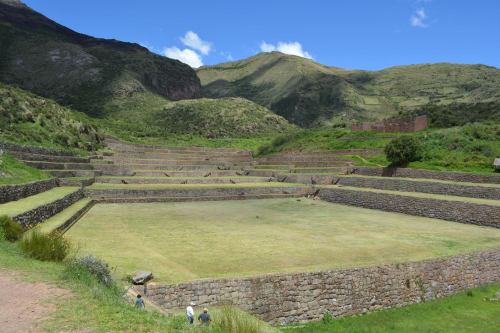
Terraces make the steep slopes arable. You still see Incan terraces being used by farmers today.
Of course I was interested in Peruvian food.
It should go without saying that potatoes are a staple of the Peruvian diet, and they were frequently eaten three times a day. There are over 4000 types of native potato in the Andes of South America, and they come in all shapes and sizes. Quinoa, the food that jogged my memory yesterday, is another traditional food, though thanks to the popularity of the crop worldwide it has become a lot more expensive (the price tripled between 2006 and 2013). While there have been concerns that the increase in popularity abroad, and thus an increase in price, may have a detrimental effect on those who grow it and eat in its native environment, other reports disagree (My host family bemoaned the increase in price and said they eat less of it now). Another crop that my host mother introduced me to, that I found delicious, was Tarwi- the seeds of an Andean Lupin. I loved the flavor, which oddly reminded me of pesto…

There were countless types of potatoes in the market.

Quinoa
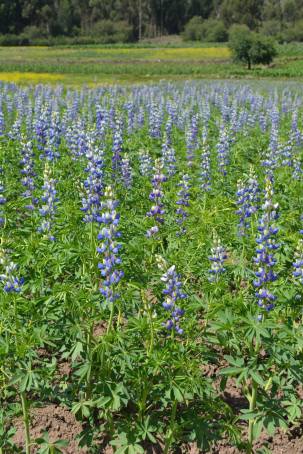
Tarwi- the tasty (and pretty) Lupin

Tarwi (on the right) for sale in the market. Also Quinoa on the left, and I think a seaweed from Lake Titicaca at the top right.
Meat was a relatively rare feature at my host families table, especially red meat. When meat was served, it tended to be chicken, though Guinea Pig (cuy) is another traditional meat. Alpaca and llama, while plentiful, are predominantly used for textiles and not eaten. Cusco is in the Andes, and thus seafood was limited, though some restaurants serve Ceviche, a specialty on the coast in places such as Lima. Corn was often featured (boiled, roasted, and even as a drink) as was rice. Soups were common, and fruits and veggies were plentiful. While general recommendations (and perhaps common sense) recommend against adventurous eating in countries such as Peru, I generally don’t follow that advice and enthusiastically tried Chicha (a traditional fermented corn drink) from roadside stands, lots of raw fruits and veggies, ceviche, and all manner of street food. I paid the price, getting EPEC (Enteropathic E coli) once and another stomach bug later (I know it was EPEC because the Doctor associated with the Spanish School recruited students for a study looking at what gastrointestinal infections befall travelers to Cusco).
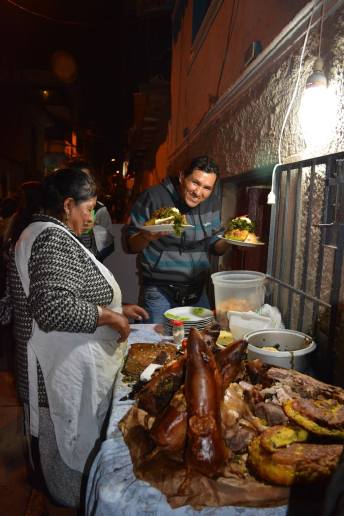
A traditional plate at the Festival of San Cristobal. Note the whole roasted Cuy (Guinea Pig) in the foreground.

The final plate, complete with roast guinea pig, roast chicken, dried alpaca, roast corn, a corn bread, sea weed from Lake Titicaca and fish roe!
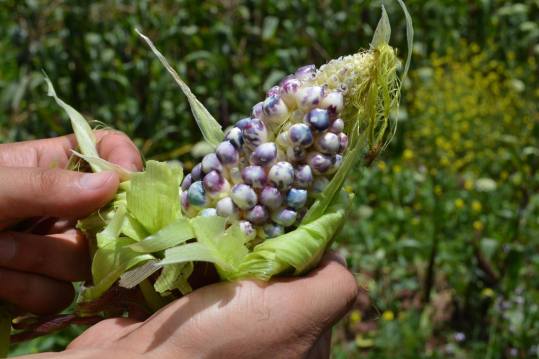
One of many types of corn- this one grown on my host families property in the Sacred Valley. We ate this boiled.

This purple corn is used to make Chicha Morada- a sweet non-alcoholic drink.

A Frutillada (mildly alcoholic strawberry/corn drink) from a road side stand.
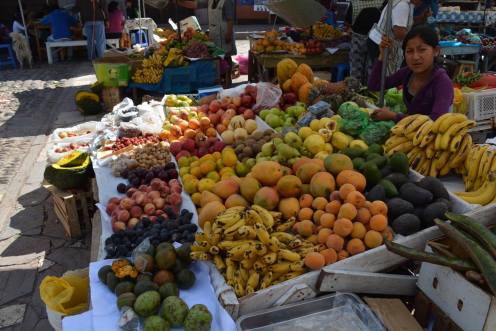
Lots of fruit at the market, including some I’d never seen before.

This was a great stall for hot chocolate in the market. In the foreground you see bowls of Crema (essentially clotted cream) which is spread generously on a bun. The hot chocolate is made from a paste of pure cacao and milk- sweetened to your liking.
The history of Peru, and the Cusco area in particular, is fascinating. The native Inca built amazing structures, which stand to this day. Machu Picchu is the most famous, but other sites are equally awe-inspiring (and often mind boggling). The Spanish showed up in 1530, and proceeded to devastate the Incan Empire. Amongst other things, the Spanish brought Catholicism, European architecture, and European art to the region, and as a result Peru is home to stunning old cathedrals and churches filled with art from the Escuela Cuzqueña. 85% of religious people in Peru identify as Catholic, though they do so with a South American flare. I was in Cusco for the Festival of San Cristobal, and the parades, festivities, and costumes were stunning.
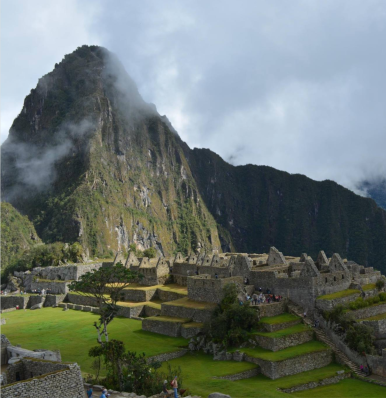
Machu Picchu. We got tickets to climb Huayna Picchu, the mountain in the background.
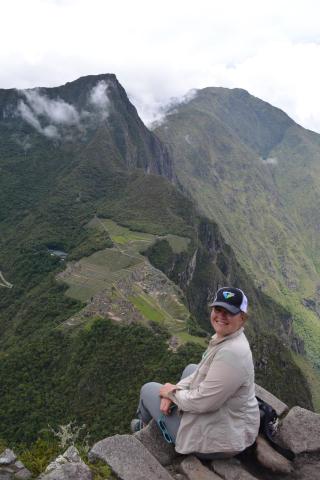
The view from Huayna Picchu.

La Plaza de Armas in the center of Cusco. My host family and school were very close.

A Spanish monastery built on the foundation of an Incan structure.
My month in Peru improved my Spanish, and certainly missing a month of Salt Lake City Inversion while exploring Peru improved my mental wellbeing. I doubt I’ll use my Spanish in New Zealand much (though I have had a Mexican patient that I chatted with in Spanish), but I’m happy that little things like a side of Quinoa salad can take me back to a month well spent in the Andes.
Are there any foods you eat that take you back to another place and time?
Read Full Post »

